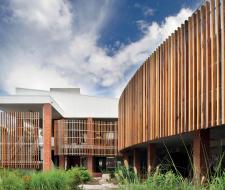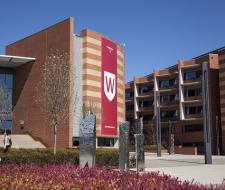English primary school in Australia for international students
-
 from 44840.00 $AUD / yearProgram namedateAgeFeesShow all courses (4)Primary schoolLast booking 5 weeks agoAll year round3-13
from 44840.00 $AUD / yearProgram namedateAgeFeesShow all courses (4)Primary schoolLast booking 5 weeks agoAll year round3-13 -
 from 24138.00 $AUD / yearProgram namedateAgeFeesShow all courses (5)Primary schoolLast booking 2 weeks agoAll year round3-12
from 24138.00 $AUD / yearProgram namedateAgeFeesShow all courses (5)Primary schoolLast booking 2 weeks agoAll year round3-12 -
 from 12000.00 $ / semesterProgram namedateAgeFeesShow all courses (4)Primary schoolLast booking 4 weeks agoAll year round7-10
from 12000.00 $ / semesterProgram namedateAgeFeesShow all courses (4)Primary schoolLast booking 4 weeks agoAll year round7-10
-

-
 Program namedateAgeFeesShow all courses (7)Business & Management (English)03.01.2024 - 14.01.202415-18
Program namedateAgeFeesShow all courses (7)Business & Management (English)03.01.2024 - 14.01.202415-18 -

-
 #1 best university in Business Faculties in Australia
#1 best university in Business Faculties in Australia AustraliaSydneyCurrently watching: 6
AustraliaSydneyCurrently watching: 6 -

-
 #1 of Design and Architecture in Australia
#1 of Design and Architecture in Australia AustraliaGold CoastCurrently watching: 3Program namedateAgeFeesShow all courses (3)Bachelor's Courses(english)All year round17+Check with our specialists
AustraliaGold CoastCurrently watching: 3Program namedateAgeFeesShow all courses (3)Bachelor's Courses(english)All year round17+Check with our specialists -

-
 #26 in Best Global Universities in Australia
#26 in Best Global Universities in Australia AustraliaBrisbaneCurrently watching: 5
AustraliaBrisbaneCurrently watching: 5
Alternative destinations
What is primary education like in Australia?
Primary education in Australia is an educational process that includes both pre-school and primary education. Preschool education is available to children aged 3 to 5 years and is focused on developing skills and socializing children before starting school. Primary education begins at age 6 and continues until age 12 or 13, depending on the location of the school. During this period, children begin studying in primary schools, where they receive basic knowledge in subjects such as English, mathematics, science and art.
What types of preschools are available in Australia?
There are a variety of pre-school settings in Australia, including nurseries, family childcare centers and early childhood education centres. Kindergartens and family child care centers provide care and educational programs for children ages 3 to 5, while preschool education centers often offer specialized educational programs to prepare children for elementary school.
What is compulsory education in Australia?
Compulsory education in Australia means that children must start attending school at age 6 and continue until age 16. It is legally required in most states and territories. However, there are options for homeschooling, subject to special requirements, exceptions for students with special needs, and permission for certain categories of students.
What early childhood education opportunities are available to international children?
International children can also access preschool education in Australia, but this often requires additional financial costs. Kindergartens and pre-school educational centers are available for foreign children, but tuition fees may be higher than for local residents.
How to choose a suitable primary school for your child?
Choosing the right primary school is important and depends on many factors. Parents should consider the location, reputation of the school, educational programs, availability of additional resources, and the individual needs of their child. Determining the right school choice will help ensure your child's successful education and development.
What are the main elements of the primary school curriculum in Australia?
The primary school curriculum in Australia includes compulsory subjects such as English, mathematics, science and art. In addition to these core subjects, children also study social studies, physical education and other areas of study. Curricula are developed taking into account national standards, providing quality and balanced education.
What documents are required for admission to primary school?
Enrolling in an elementary school typically requires you to provide copies of your child's birth certificate, medical records, and an application form. Additional documents, such as proof of residence, may also be required for registration.
Are there private primary schools in Australia?
Yes, there are private primary schools in Australia. These schools provide an alternative to public schools and usually charge tuition fees. Private schools can have different educational approaches and specializations, and parents can choose a school that better suits the child's needs and their family's values.
What are the rules regarding dress code in primary schools?
Policies regarding dress code in primary schools may vary from school to school. However, many primary schools in Australia require the wearing of a school uniform. This helps create a learning environment where all students are dressed the same and can focus on their studies.
Can children of international students study in Australian primary schools?
Yes, international students have the opportunity to study in Australian primary schools. However, to do this, they often require a student visa, as well as additional requirements such as insurance and tuition fees. Students can choose both public and private schools depending on their preferences and capabilities.
Learning programs-summary information
| Name | Meaning | Equivalent | Min. age | Duration, years |
Next stage | Cost |
|---|---|---|---|---|---|---|
| GCSE | General certificate of secondary education | secondary education (non-accomplished) | 14 | 1–2 | A-Levels | 15,000 USD+ |
| A-Levels | Advanced level | secondary education (accomplished) | 16 | 2 | University | 15,000 USD+ |
| BTEC | Business and Technology Education Board | secondary special education | 14 | 2–3 | University/ work | 15,000 USD+ |
| Oxbridge Preparation | Preparing for Oxford and Cambridge | secondary education (accomplished) | 17 | 1 | University | 15,000 USD+ |
| International Baccalaureate | International baccalaureate | secondary education (accomplished) | 16 | 2 | University | 18,000 USD+ |
| Foundation/ Pathway Year | Preparatory year | admission to the 1st year of university | 17 | 1 | University | 14,000 USD+ |
| NCUK | The Northern consortium | 2 year university | 17,5 | 1 | 2 year University of NCUK | 13,000 USD+ |
| Special Preparation (Medics/Math/Business) | Specialized training | - | 14 | optional | optional | 4,000 USD+ |
| Academic English | Academic English | Language school | 8 + | 6–12 months | School or University | 8,000 USD+ |
Advantages and disadvantages of English schools
| Advantages | Disadvantages |
|---|---|
| The opportunity to enter the best universities in England, USA, Canada, Switzerland, Europe, the world | Expensive |
| High quality of education and academic standards | Strong workload |
| Perfect English after graduation | The need to change the social environment; it takes time to adapt |
| Useful contacts | The difficulty of choosing the most suitable school for the child, requires a qualified specialist |
Top 21 boarding colleges in England 2026
| 1 | Cardiff Sixth Form College |
| 2 | National Mathematics and Science College |
| 3 | Abbey College Cambridge |
| 4 | d'Overbroeck's College |
| 5 | MPW London |
| 6 | CATS Cambridge |
| 7 | Kensington Park |
| 8 | DLD London |
| 9 | King's College St Michael’s |
| 10 | Bellerbys Cambridge |
| 11 | Chelsea Independent College |
| 12 | MPW Cambridge |
| 13 | Bellerbys Brighton |
| 14 | CATS London |
| 15 | St Clare's Oxford |
| 16 | Bishopstrow College |
| 17 | CATS Canterbury |
| 18 | Bellerbys London |
| 19 | Ealing Independent College |
| 20 | Cambridge Tutors College |
| 21 | Abbey Manchester |
